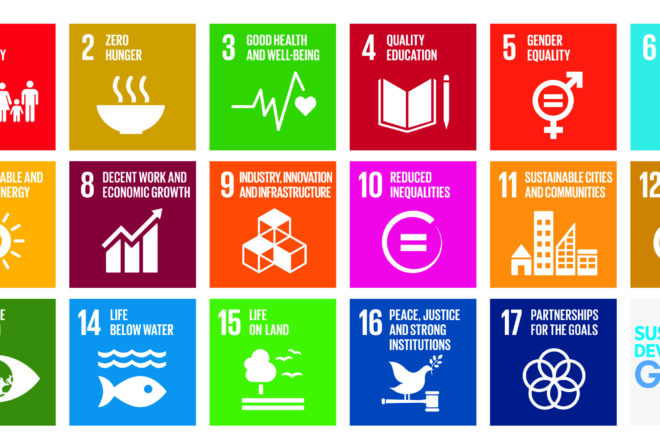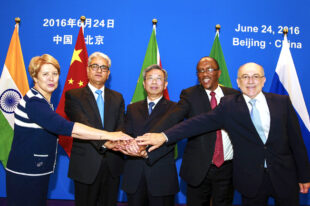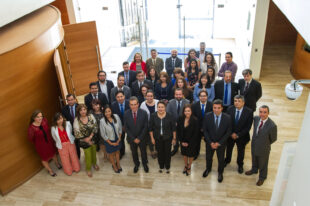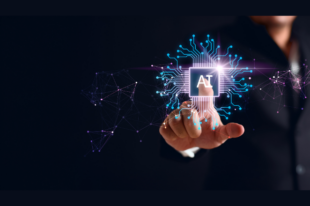A Successful INTOSAI and Achieving Global Sustainability


Sustainable Development Goals Graphic courtesy of the United Nations
Theme I of INCOSAI XXII addressed Supreme Audit Institution (SAI) roles and contributions in reviewing and monitoring the implementation of the 2030 Agenda for Sustainable Development (2030 Agenda).
There is a growing global recognition (and expectation) regarding roles and valuable contributions the International Organization of Supreme Audit Institutions (INTOSAI) and SAIs play in making a meaningful contribution to ensure efficient, effective, transparent and accountable implementation of the 2030 Agenda.
The Sustainable Development Goals (SDGs) are 17 aspirational objectives aimed at ending poverty, protecting the planet and ensuring peace and prosperity for all. These global goals are interconnected and build on the success of their predecessors, the Millennium Development Goals (MDGs).
Mr. Wu Hongbo, Under Secretary General of the United Nations Department of Economic and Social Affairs (UNDESA), attended this year’s Congress in Abu Dhabi, and offered a clear distinction between the SDGs and the MDGs.
“The difference between MDGs and SDGs is that we have follow-up and review,” Mr. Wu noted, and asked, “How do we do that? How do we make sure that all the money, the financial support for the implementation will be used wisely, effectively and for the purposes allocated to the implementation?”
Mr. Wu affirmed that attempting to do so means mobilizing oversight by all, particularly SAIs.
“They have to expand their mandates, because the 2030 Agenda is really unprecedented. It covers a much wider area. The national auditors are encouraged to step outside the traditional boundary of their mandates. One more challenge is that they have to develop methodologies to measure the new mandates, as well as indicators,” declared Mr. Wu.
“I am so glad that this current Congress has greatly encouraged all INTOSAI members to support the implementation of the 2030 Agenda, to play its role to oversee the implementation. This is important. And we, the United Nations, are very glad to be associated continuously with INTOSAI to work together,” he said.
Mr. Wu noted that by working together “we could make the financial support for implementation more effective and efficient, and that will be for the benefit of all human beings, for future generations.”
The UNDESA presence at the Congress was also highlighted at their booth, where they hosted a breakout session focusing on the 2030 Agenda and SDGs. Helping to generate the discussion among the participants was Ms. Aránzazu Guillán Montero, Inter-Regional Adviser on Public Accountability for UNDESA.
“One of the challenges we have to address now is how we lead this work in the follow up and review of the 2030 Agenda,” Ms. Guillán Montero emphasized.
The 2030 Agenda is a comprehensive and transformative blueprint, and Ms. Guillán Montero expressed that there are different levels at which SAIs can contribute in a wide variety of ways—nationally, regionally and globally.
Particularly at the regional level, Ms. Guillán Montero stressed that “it is important for the INTOSAI community to engage its regional organizations, which can provide inputs into the global review at the High Level Political Forum (HLPF).”
According to Ms. Guillán Montero, the annual HLPF is the core of the learning process, and it has two main mechanisms: the thematic review, where a report from the SAI perspective “can be very useful to understand the main lessons learned from the implementation process regarding that theme.”
“The other mechanism,” she added, “is where countries submit voluntary national reviews to the HLPF.”
INTOSAI’s Working Group on Key National Indicators (KNI) has conducted activities with close ties to SDG implementation.
Mr. Dmitry Zaitsev from the Accounts Chamber of the Russian Federation that leads the KNI working group, emphasized the significance of the group’s efforts.
“KNI is a very important topic. The working group on KNI will give the impetus to the implementation of the SDGs. I think we need to join our efforts, to join the UN initiative, to be a part of it,” Mr. Zaitsev said.
Tackling the goals can be broken down into achievable components, he furthered. “There are 17 goals. For example, each country will choose a goal, the key goal, which will have several targets followed by indicators—the key indicators are what we are interested in.”
INTOSAI’s Strategic Plan for 2017-2022 serves as a road map for INTOSAI and its members support the implementation and assist in the follow-up and review of the SDGs and related national sustainable initiatives.
The importance of this effort was echoed at INCOSAI XXII throughout the discussions and with the Abu Dhabi declaration.
Utilizing four different approaches and providing regular feedback to its community on SDG-related audit issues, INTOSAI set forth an intention to better engage with, inform and encourage SAIs to do effective work in this area.
Several key objectives were identified to address in the years leading up to INCOSAI XXIII in 2019:
- Develop and deliver frameworks for implementing the four approaches based on SAIs’ initiatives, and a mechanism for monitoring progress and collecting information;
- Support the production of high-quality SDG-related information through these frameworks, and sharing the information within the SAI community; and
- Ensure effective relations with external partners, including informative and accessible reporting and value maximization of future INTOSAI/UN symposia on the theme.





